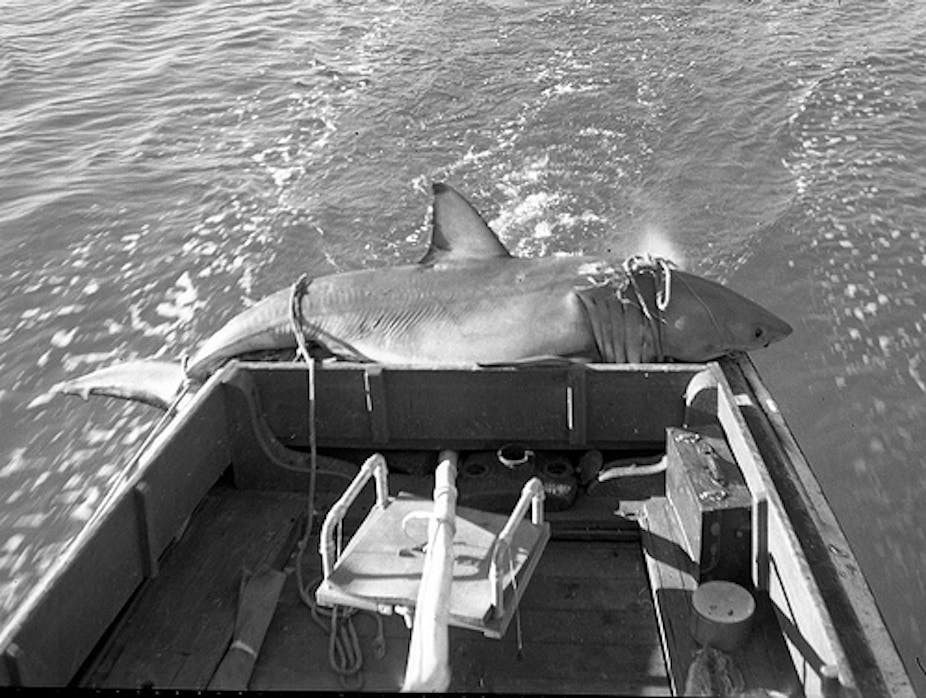The great shark debate continues in Australia as summer approaches. Shark bites on bathers and surfers are a particularly sensitive reality. These are personal and community-wide tragedies that implore us to find adequate solutions. The goal of everyone is to improve shark bite prevention and risk reduction while finding solutions that reflect the values of the public.
Shark culling and shark hunts, as an acceptable government response to beach safety, have been up for consideration. The Western Australia Government’s decision to spend $2 million dollars “to track, catch and, if necessary, destroy” sharks in preemptive shark hunts that would cull sharks from local waters has come under scrutiny. The Herald Sun reported on a new poll on the West Australian website that found that 82% of respondents opposed the new plan and only 13% supported it.
It may be that support for culling and shark hunts in Australia is waning. For more than 30 years, there has been a trend toward greater balance between wildlife, marine life and national values.
If a brown snake is in your backyard in New South Wales today, the law states that you must call someone to remove it, rather than killing it. Much the same was true for crocodiles, first protected in Western Australia in 1969 and then in the Northern Territory in 1971. And stinger-suits are often mandatory on swims out on the Great Barrier Reef. The public is informed of the dangers and manages this delicate balance with sophistication.
Yet there is one additional piece to note in the current shark debate. When the question of whether to cull great white sharks is asked, it is important to recognise that shark culling is currently taking place today along the east coast of Australia.
This spring marks 75 years since the New South Wales Government first began funding shark nets along Australian beaches. In Queensland, a shark control program (including nets) began in 1962. But after more than 70 years, the objective government data raises new questions about their effectiveness, while also highlighting the number of great white sharks killed.
How effective are nets?
In 2009, the NSW Government conducted a study and released a “Shark Meshing Program Report” that reviewed the effectiveness of shark nets on reducing shark attacks. It stated that “the annual rate of attack was the same both before and after meshing commenced.”
Are shark nets really a culling method?
During the 2006 Scientific Shark Protection Summit in NSW, a report characterised shark nets this way:
“The program aims to cull populations of large aggressive sharks adjacent to metropolitan beaches, and thus minimise the potential for shark attack on swimmers.”
How many white sharks have been killed?
Since 2008, fisheries data shows that a total of 54 great white sharks have been culled by the programs in NSW and Queensland. The nets also inadvertently killed 13 endangered grey nurse sharks during this period (four in NSW and nine in Queensland) because the program is indiscriminate in the species that it catches.
What are the other environmental costs?
The answer to this question influenced New Zealand’s removal of its shark nets in 2011 and stopped Brazil from considering the option, even following 11 shark attacks in 1994.
Government reports show that the species of marine life caught and killed in the nets are overwhelmingly “non-target” species, which includes dolphins, turtles, whales and dugongs. In 2011 in NSW, 61% of the marine life killed in the nets was “non-target” species. In 2010, that number was 64%.
Recently, an independent report by Bond University into shark nets found that “due to the environmental impacts of shark control activities, it is not recommended that either shark nets or drum-lines be introduced into Western Australia.”
A difficult balancing act
To be clear, there are two sides to every story and it is important to include each perspective. Fisheries scientists work hard every day to protect shark species and reduce shark bites.
Proponents of nets would note that there are numerous ways they try to reduce catching non-target species, such as putting “pingers” on nets to try and keep dolphins and whales away. There are also efforts to limit the mortality of species by checking the nets regularly and taking them down (in NSW) during whale migration months.
In many cases, the total catch from shark nets in a year is the same as a few days by fishery boats off the coast. In addition, researchers collect scientific data from many of the species that are caught.

Finally, proponents of shark nets would note that there have been dramatic reductions in fatal shark bites since the nets were put up in both NSW and Queensland. However, it is also true that better first-responder care, treatment for infections and the use of wetsuits are key factors in increased survival rates from shark bites.
Where to go from here?
The debate on sharks remains unsettled as another summer approaches. We know that there are no simple solutions to shark bites, but all of the data must be available for public consideration. Beach safety is an important issue and serious shark bites do occur.
Yet the public seems willing to engage in a wider debate, with shark hunts and culling off the table, to make room for new options that have clearer benefits and less costs. We need to make beach going as safe as possible, but zero-risk does not exist. This is often why community values offer us a place to look and the path forward.

